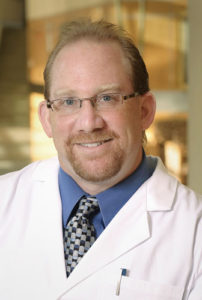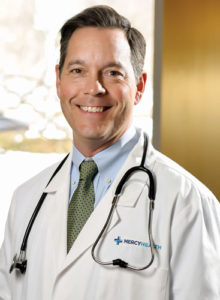Feeling Well Shouldn’t Stop an Annual Physical
By Lynne Thompson
The I-feel-perfectly-fine-there’s-absolutely-nothing-wrong-with-me reasoning makes putting off an annual physical downright easy. But Dr. Randy Wexler, associate professor and clinical vice-chair of family medicine at The Ohio State University, negates that justification, reminding that “feeling well does not necessarily mean there’s not something that you should be addressing”—conditions such as high blood pressure, high cholesterol and prediabetes don’t come with symptomatic calling cards. Dr. Michael Todd, medical director of employer health solutions for Cincinnati-based Mercy Health System, adds that the annual physical is an opportunity to build a rapport between patient and physician.

“If a medical issue does come up, that patient has the confidence, the trust and, really, the relationship to be able to ask their care provider anything,” he says.
To those who argue that they know their numbers relating to the aforementioned conditions, along with the various preventive tests and vaccines they’re supposed to get at prescribed intervals, Wexler answers that recommended numbers and screenings change not only with age but risk level. For example, the first colon-cancer screening typically recommended at age 50 will begin earlier for those who have a first-degree relative or two second-degree relatives who developed the disease, usually 10 years before the age when the first relative was diagnosed.
“The cholesterol level that is perfectly fine at [age] 40 may put you at risk at age 55,” he adds.

To get the most out of the annual physical:
Bone up on family medical history. “It’s not uncommon for somebody to say, ‘My grandfather died of stomach cancer,’ and it turns out it was colon cancer,” Wexler says. “That generates a very different level of recurrent evaluation for colon cancer.”
Todd treats patients who don’t have a family history “like they have the greatest risk of developing whatever condition we’re thinking about”—at least until he’s able to rule it out. “I think I speak for most docs.”
Prepare questions about any physical/mental changes or issues. Wexler includes noting changes in sleep and breathing, while Todd adds new skin growths, aches and pain, and variations in bowel habits to the list. While the physical includes a review of lifestyle risks, bodily systems, etc., Todd observes that “if a patient comes in organized with thoughts that have accumulated since their last visit, that drives a deeper, more valuable interaction between that doctor and that patient.”
Compiling lists of medications and supplements. “Just because something is considered natural does not mean it’s safe,” Wexler says. “Just because something is natural does not mean it helps you.”
Shingles Vaccines
An ounce of prevention against a ton of pain
One of the newer vaccines available helps prevent shingles. Dr. Michael Todd, medical director of employer health solutions for Cincinnati-based Mercy Health System, describes it as “a reactivation of the herpes zoster virus”—the same virus that causes chicken pox. Dr. Randy Wexler, associate professor and clinical vice-chair of family medicine at The Ohio State University, explains that the virus settles in the nerves and remains there, dormant, after a bout with chicken pox. If it does reactivate, it causes a skin rash along the distribution of a nerve that is often painful to downright debilitating.
“For some people, the discomfort never goes away,” Wexler says.
And according to Todd, a past episode doesn’t provide immunity.
There are two shingles vaccines:
Zostavax. Wexler says the original, administered in a single shot, is 65 to 70 percent effective. According to Todd, it only is approved for use in adults (over age 60). And because of how the immunization is produced, it cannot be given to certain individuals—Wexler mentions the immunosuppressed and those on certain medications.
“It is recommended that anybody who’s had the old one should get the new one,” Wexler says. However, not every insurance plan covers it. “We ask patients to check.”Shingrix. According to Wexler, the latest version of the vaccine, administered in two shots, is about 98 percent effective. Todd adds that it is approved for use in adults starting at age 50—exactly when the risk of developing shingles increases.
Shingrix. According to Wexler, the latest version of the vaccine, administered in two shots, is about 98 percent effective. Todd adds that it is approved for use in adults starting at age 50—exactly when the risk of developing shingles increases.
